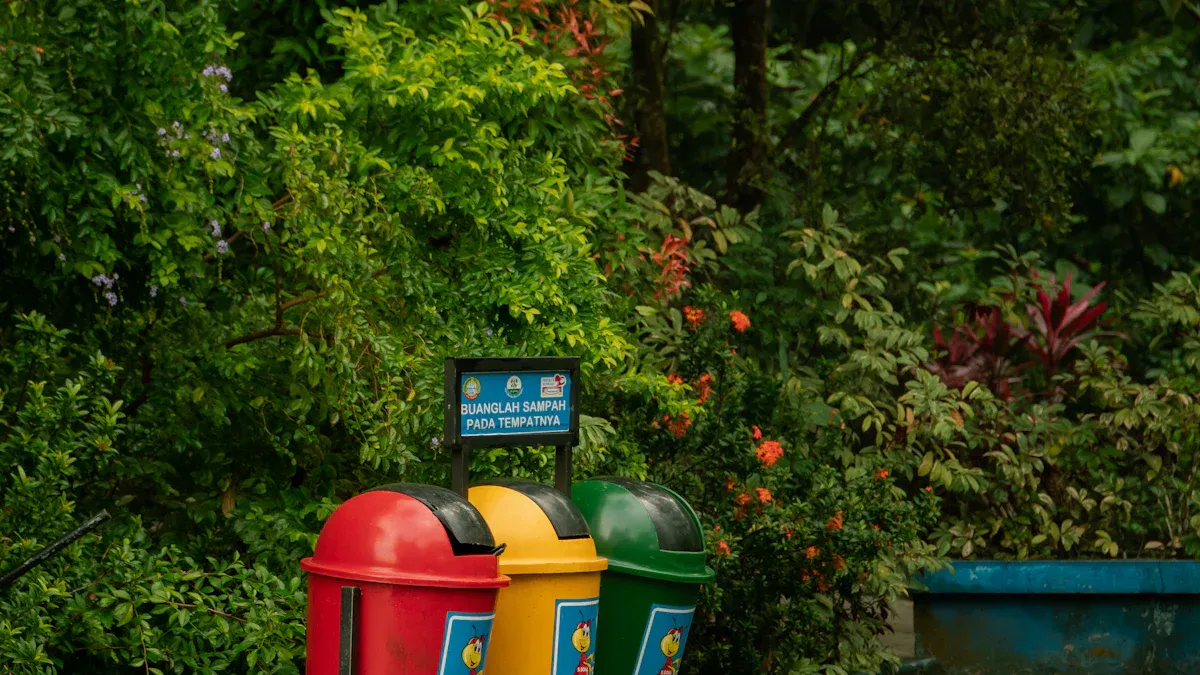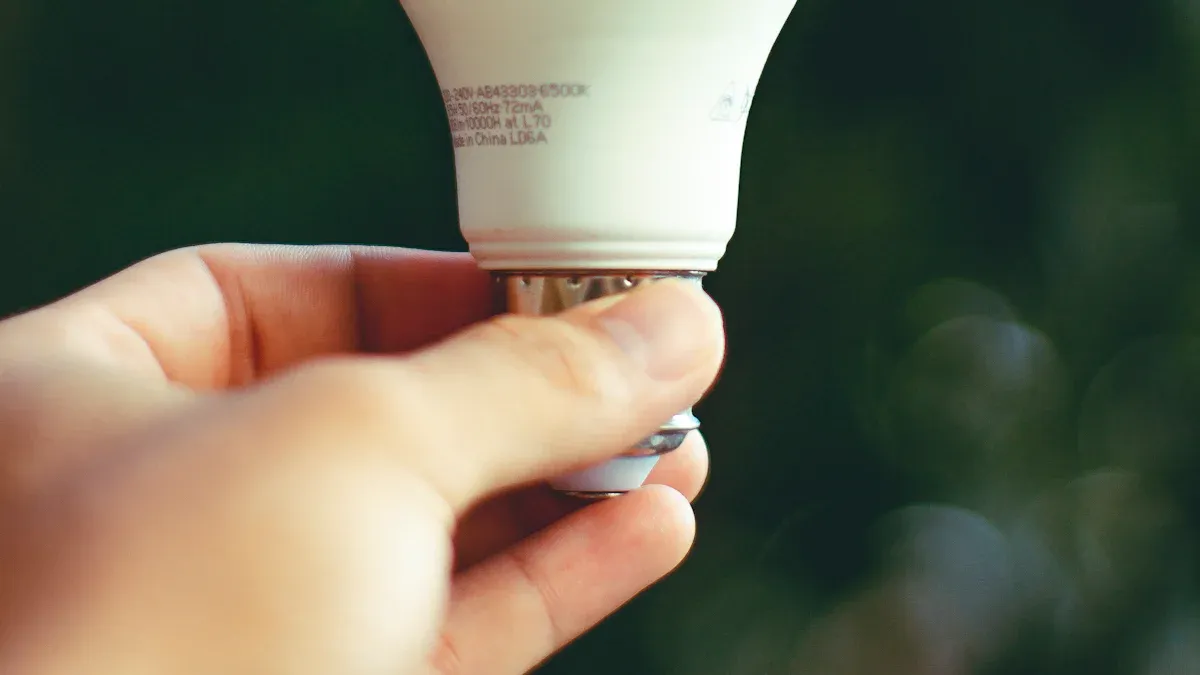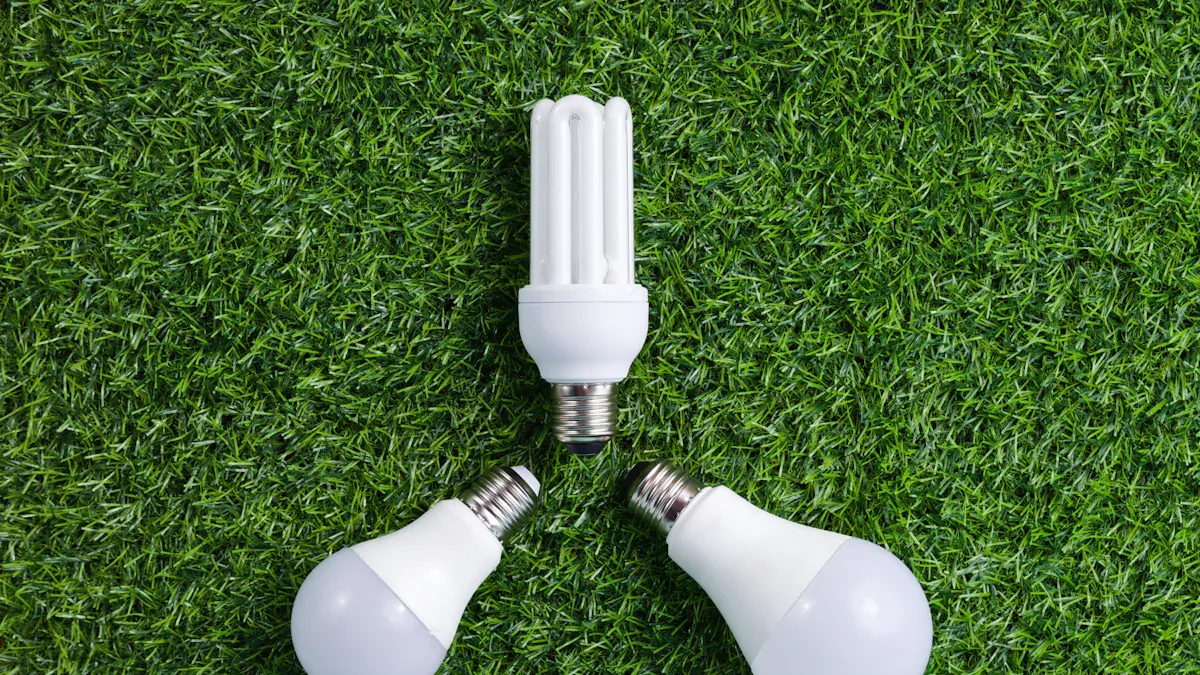LED Light Disposal: Environmentally Responsible Methods and Recycling Options

You might think it is okay to throw away LED bulbs, but led light disposal needs more attention. Recycling these bulbs helps the Earth and saves important materials from landfills. As people care more about the environment, rules and new technology make recycling bulbs better. You can take used bulbs to recycling centers, drop them off at stores, or use mail-in services. Recycling programs turn old bulbs into new things. Always look at Home or About Us pages for Product and recycling choices. Pick the right way to throw away bulbs to help keep the planet clean.
Key Takeaways
Recycling LED bulbs helps the environment. It keeps dangerous metals out of landfills. It also saves important materials like glass and metals.
You can recycle LED bulbs at local centers. Some hardware stores take them too. You can also use mail-in programs. This makes it easy to get rid of bulbs safely.
Be careful when you handle used LED bulbs. This helps you avoid breaking them and getting hurt. Put them in strong boxes. Wear gloves if a bulb breaks.
Pick good quality LED bulbs and use them the right way. This helps bulbs last longer. It also cuts down on waste and saves money.
Always check your local rules for recycling and disposal. This helps you follow the best green practices. It also keeps your community clean.
Why LED Light Disposal Matters
Environmental Impact
Throwing away led bulbs seems easy, but it affects nature a lot. Led bulbs are not called hazardous waste, but they have dangerous stuff like lead, arsenic, and nickel. If you put bulbs in the trash, these things can get into dirt and water. This can hurt plants, animals, and people too. When bulbs get crushed in landfills, they make toxic dust that goes into the air. Not using the right disposal makes us need more new bulbs. Making more bulbs causes more carbon emissions and makes global warming worse.
Tip: Always pick green ways to get rid of led bulbs. This helps protect nature and cuts down on waste.
Benefits of Recycling
Recycling led bulbs is good for the Earth in many ways. When you recycle, you save things like glass, aluminum, and rare earth metals. This means we do not need to mine as much, so nature stays safer. Recycling keeps dangerous stuff out of landfills, so air, water, and dirt stay clean. You help make less waste and support green factories. Many states have recycling programs, so you can help protect the Earth.
Recycling led bulbs gets back metals like aluminum, copper, and silver.
You stop dangerous stuff from getting into nature.
Recycling saves resources and lowers harm to the planet.
Green recycling makes less carbon go into the air.
Led bulbs last longer and do not have mercury, so they are safer.
Some people think all bulbs are hazardous waste, but led bulbs are safer than fluorescent bulbs. You can recycle them at many hardware stores or local programs. Always check your local rules to find the best green way to get rid of bulbs.
Initiative / Organization | Description of Initiative | Key Activities | Outcomes / Impact |
|---|---|---|---|
Mercury lamp recycling outreach program | Education, outreach, technical help | More recycling, better awareness | |
Association of Lighting and Mercury Recyclers | Works with EPA to boost recycling | Education, outreach, planning | More recycling, targeted outreach |
California DTSC | Training on lamp management | Training, fact sheets, best practices | Better compliance, more awareness |
When you choose the right way to throw away and recycle bulbs, you help make less waste and keep the world cleaner.
How to Recycle LED Light Bulbs

Safe Handling and Storage
Be careful when you touch used LED bulbs. They do not have mercury, but they can still break. Broken bulbs can cut you or let out small bits of metal. Before you recycle, turn off the power and let the bulb cool. Hold the bulb by the base, not the glass part. This helps stop it from breaking. If you need to keep bulbs before recycling, put them in a strong box. You can also wrap them in newspaper. Keep the box dry and away from kids and pets. Doing this stops accidents and keeps everyone safe when recycling.
Tip: Do not put broken bulbs in the trash. Wear gloves to pick up broken pieces. Put them in a sealed bag before throwing them away.
Local Recycling Centers
Many towns have places to recycle LED bulbs. You can look online or ask your city’s waste office. Earth911.com is a good website for finding recycling spots. You can search by bulb type and where you live. The site lists stores and centers that take LED bulbs. Some counties, like Hennepin County, have special drop-off spots. These are in places like Bloomington and Brooklyn Park. You can recycle up to 25 bulbs per year for free at these centers. Take bulbs out of fixtures and pack them so they do not break. Most centers do not take bulbs from businesses. They also do not take bulbs mixed with other types.
Use Earth911.com to find recycling centers close to you.
Look at your city’s website for drop-off places and rules.
Follow the rules for packing bulbs and how many you can bring.
Retailer Drop-Off Programs
Many hardware and home stores let you recycle bulbs. Bring your used LED bulbs to these stores. Drop them in bins near the door or at the help desk. These programs make recycling easy when you shop. Some stores limit how many bulbs you can bring at once. Ask a worker if you are not sure about the rules. These programs help keep bulbs out of landfills and help your community recycle.
Note: Not all stores take every kind of bulb. Ask the store before you bring your bulbs.
Mail-In and Manufacturer Programs
If you cannot find a recycling center or store, try mail-in programs. Some companies and bulb makers sell mail-in kits. You order a kit, put your bulbs inside, and mail it back. This is good if you have lots of bulbs or live far away. Some kits come with a prepaid label and packing tips. These programs let you recycle bulbs from anywhere in the country.
Program Type | How It Works | Best For |
|---|---|---|
Mail-In Kits | Order kit, pack bulbs, mail back | Remote or rural locations |
Manufacturer Programs | Follow brand-specific instructions | Large quantities |
Remember: Always check your local rules before using any recycling program. Some places have special rules for recycling bulbs.
When you recycle LED bulbs, you help the Earth. You also make sure good materials get used again. Try to find a recycling center, use a drop-off spot, or mail in your bulbs. Your choices help keep our world clean.
Recycling LED Bulbs: What Happens Next
The Recycling Process
When you take used bulbs to a recycling center, their journey continues. Special machines and steps help get back useful materials and protect nature. Here is what happens after you drop off your bulbs:
Workers break the led bulbs into small pieces by shredding them.
The small pieces go through machines that sort them. These machines use magnets, special currents, or light to separate glass, plastic, and metals.
Metals like copper and aluminum are taken out to use again.
Circuit boards from the bulbs go to hot smelters. There, heat or chemicals help get metals like gold, nickel, and aluminum.
Some rare earth metals stay in the waste, but new machines may help get more in the future.
Tip: Taking led bulbs to real recycling centers keeps good materials out of landfills and helps stop waste.
Materials Recovered
Recycling led bulbs does not save every part, but it gets back many useful things. You help the planet by making sure these things get used again. Studies show recycling led bulbs can get back about 38% to 46% of each bulb’s weight. This means almost half of the bulb can become new products instead of trash. You help save glass, plastic, copper, aluminum, and sometimes silver. Some special elements, like gallium and rare earth metals, are harder to get, but recycling keeps getting better.
When you recycle light bulbs, you help keep the Earth clean and use fewer new materials. You also help make less trash and give old bulb parts a new use. Recycling led bulbs at centers is one of the best ways to help the planet and keep your town green.
Light Bulb Recycling Alternatives
Regular Trash Disposal (Last Resort)
Only throw LED bulbs in the trash if you have no other choice. Many places have recycling programs for bulbs, so check your local rules first. Putting LED bulbs in the trash can hurt the environment. If bulbs break in landfills, they might let out harmful metals like lead. These metals can get into the ground and water. LED bulbs do not have mercury, but they do have circuit boards and metals. These need special care when thrown away. The EPA calls LED bulbs Universal Waste because of these metals. Some states have strict rules for throwing away bulbs, so always ask your local waste office before using the trash.
Note: Some states make you recycle all bulbs. Never put bulbs in the trash if your area has a recycling program.
Special Collection Drives
Many towns have special days to collect old bulbs for recycling. These events help you get rid of bulbs safely. They also keep dangerous stuff out of landfills. You can bring your used bulbs to places like city halls, hardware stores, or recycling centers during these events. Most drives let people drop off CFL and LED bulbs for free. Businesses may have to pay a small fee. Some places charge more for light fixtures, especially if they have PCBs.
Participant Type | Requirements / Conditions | Locations | Fees | Hours |
|---|---|---|---|---|
Residents | Bring CFL and LED bulbs to drop-off sites; no cost for bulbs | City halls, hardware stores, recycling centers | Bulbs: free | Varies by site |
Businesses | Recycling centers | $0.54 per bulb | Same as residents |
Check the hours and rules for each collection event. Some places only take bulbs at certain times. Always pack bulbs well so they do not break. Special drives make it easy to follow the rules and help keep your community safe.
Reducing LED Waste

Extend LED Lifespan
You can help your LED bulbs last longer by doing a few easy things. When bulbs last longer, you throw away less and help the planet. Try these ideas to make your lights last:
Buy good LED bulbs so they work better and last longer.
Use light fixtures that let heat out. Do not use closed fixtures unless the bulb says it is safe.
Put in surge protectors to stop damage from power spikes.
Try not to turn lights on and off too much. Turning them on and off a lot can break the inside parts.
Pick dimmer switches that work with LED bulbs. This stops flickering.
Clean your bulbs and fixtures often. Dust and dirt can make bulbs hot.
If you clean your bulbs and use them carefully, they will last longer and stay bright.
Choose Quality Products
LED bulbs are not all the same. The best ones last longer and are better for the Earth. When you shop, look for these things:
Saves energy and does not get too hot
Has different colors and brightness for your needs
Filament LEDs look old-fashioned but are still eco-friendly
Warm light makes rooms nice and stops people from throwing bulbs away early
Aspect | High-Quality LED Bulbs | Incandescent Bulbs |
|---|---|---|
Lifespan | 20,000–50,000 hours | 1,000–2,000 hours |
Replacement Frequency | Rarely needed | Frequent |
Waste Generation | Low | High |
Energy Efficiency | High | Low |
Environmental Impact | Eco-friendly | Less eco-friendly |
Cost Over Time | Saves money | Costs more |
Picking the right LED bulbs means you change them less. You make less trash and help the planet.
Minimize Future Disposal
You help nature when you throw away fewer bulbs. LEDs use much less energy than old bulbs and can last up to 50,000 hours. This means fewer bulbs are made, shipped, and thrown away. LEDs do not have mercury, so they are safer for the Earth. One LED bulb can take the place of 25 old bulbs. This makes less trash and helps the planet.
LEDs can be recycled, so they are good for the Earth.
Changing bulbs less means less packaging and less pollution.
Using LEDs helps make the world greener for everyone.
When you pick eco-friendly lights, you help keep the world clean and save natural resources.
Recycling your LED bulbs helps the Earth and saves important stuff. When you recycle, you make less trash and help stop pollution.
LED bulbs have metals, glass, and plastic that recycling centers can use again.
Recycling saves resources and keeps electronic parts out of the trash.
Local drop-off spots and mail-in programs make recycling simple.
You can find places to recycle at stores like Home Depot or by using websites like Earth911. Tell your friends and family about recycling so everyone can help the planet.
FAQ
Can you throw LED bulbs in the regular trash?
You should not throw LED bulbs in the regular trash. Many places have recycling programs. Check your local rules first. Recycling helps protect the environment and keeps harmful materials out of landfills.
Where can you recycle LED bulbs?
You can recycle LED bulbs at local recycling centers, hardware stores, or through mail-in programs. Use websites like Earth911 to find a location near you. Always follow the instructions for safe drop-off.
Do LED bulbs contain hazardous materials?
LED bulbs do not have mercury, but they do contain small amounts of metals like lead and nickel. These metals can harm the environment if not handled properly. Recycling helps keep these materials out of nature.
What should you do if an LED bulb breaks?
Wear gloves to pick up broken pieces. Place them in a sealed bag before disposal. Do not use your bare hands. Clean the area with a damp paper towel to collect small bits.
Why is recycling LED bulbs better than throwing them away?
Recycling LED bulbs saves resources and reduces waste. You help recover glass, metals, and plastics for new products. This action protects the planet and supports a cleaner community.
See Also
Understanding LED Bulbs: Advantages, Technology, And Choosing Guide
Exploring GE LED Bulbs: Key Features And Buying Advice
Comparing LED Streetlights And Traditional Lights On Efficiency
Modern LED Street Bulbs: Efficiency, Durability, And Installation Advantages

